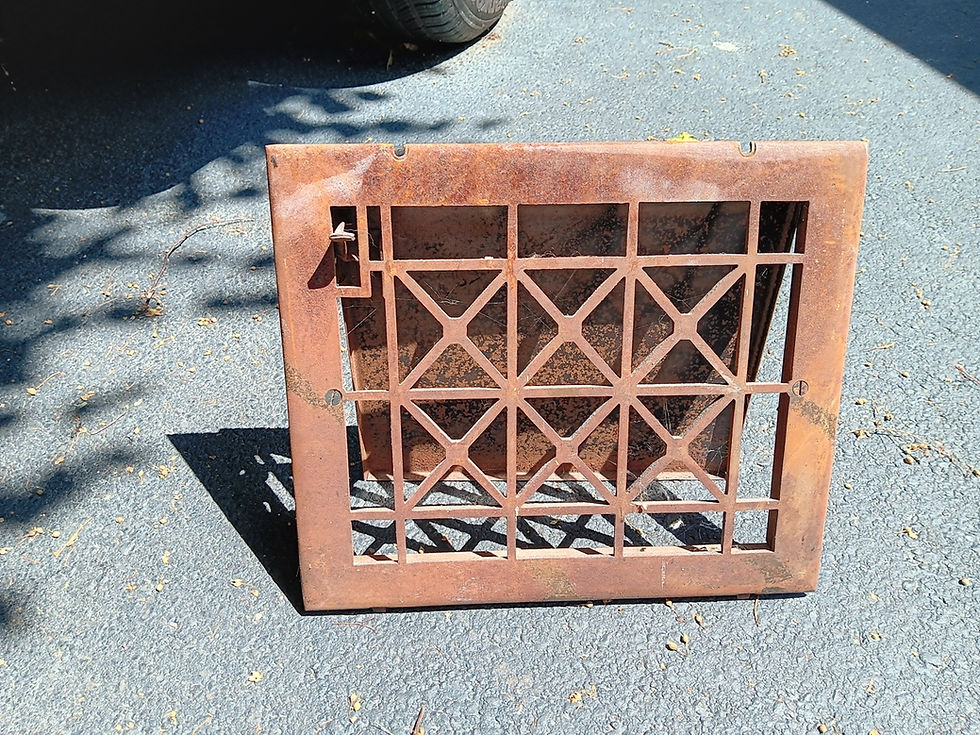Ideas from Ed: The crooked edge (Volume 6, Issue 2)
- edwardpetrus

- Feb 1, 2023
- 2 min read
As you likely suspect, to come up with “Ideas” columns, I sometimes need to draw from projects that I did prior to becoming the author of these stories. At other times, I am rushed for one reason or another to get through a project, and don’t adequately take photos to document every step. I those cases, and for this month’s column, I will have to supplement a few photos with a drawing.
I was recently asked about the best way to place a piece of drywall tightly against an irregular surface and to make it fit well. Luckily, I’ve done that exact thing, and also did the same with some OSB (oriented strand board.) I’ll share the few pictures I do have. The procedure is one that most do-it-yourselfers already know, but since I was asked, apparently it’s not known by everyone.
Here is the OSB project. The picture shows a basement doorway, lots of funky wiring, falling metal flashing, etc. but that will all go bye-bye in this project.

The outside wall at the crooked joint location is stone, and rather irregular.
Here’s the project with some of the area cleaned up a bit and some framing in place:

Here’s the work as completed, but before final finishing and painting.

So what’s the secret to cutting that edge so it fits nicely against the irregular stone? It’s very simple! The material to be cut (OSB in the above example) is placed in position as best as is possible before cutting. It should be a bit oversized in the horizontal direction. More on that in a minute.
A compass (the kind that draws circles) with the ends spread apart (I use about 3”) is held and kept absolutely horizontal with the point against the irregular surface and the pen/pencil on the material. It is then slowly moved along the irregular edge, thus tracing the edge contours onto the material to be cut. Here’s a drawing illustrating what I mean:

Then, all that’s necessary is to manually cut the material on the line that was drawn, with something like a jigsaw or sabre saw. I said that the material needs to be oversized because you’ll be cutting off a width at least equal to the compass span (e.g., the 3” I use.) If the variation in the edge is more than 3”, then your compass span should be increased. This is one of those things that as you try it, you’ll easily figure it out.
Here’s an earlier project of mine using drywall. I don’t have a good “before” picture, and this is the only one I have that even shows a little piece of the crooked edge. Ignore everything else in the picture (ugly plumbing, for example) as I already have dealt with it.

Here is an in-progress picture:

With a quick squeeze of latex caulk, this edge mates perfectly with the stone. That’s MUCH better than cutting the edge straight, then filling all the gaps with caulk, isn’t it? Here’s the completed job:

Thanks for reading, and happy restoring!
Ed
If you’d like to download a PDF of this “Ideas” column, click here:




Comments